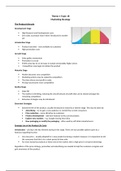Summary
Summary Sociology of Class
- Module
- SO110 (SO110)
- Institution
- London School Of Economics (LSE)
Notes on Class - Classical Approaches - Contemporary Approaches - Effects of Class - Contemporary Changes and Challenges - Intersectionality
[Show more]






